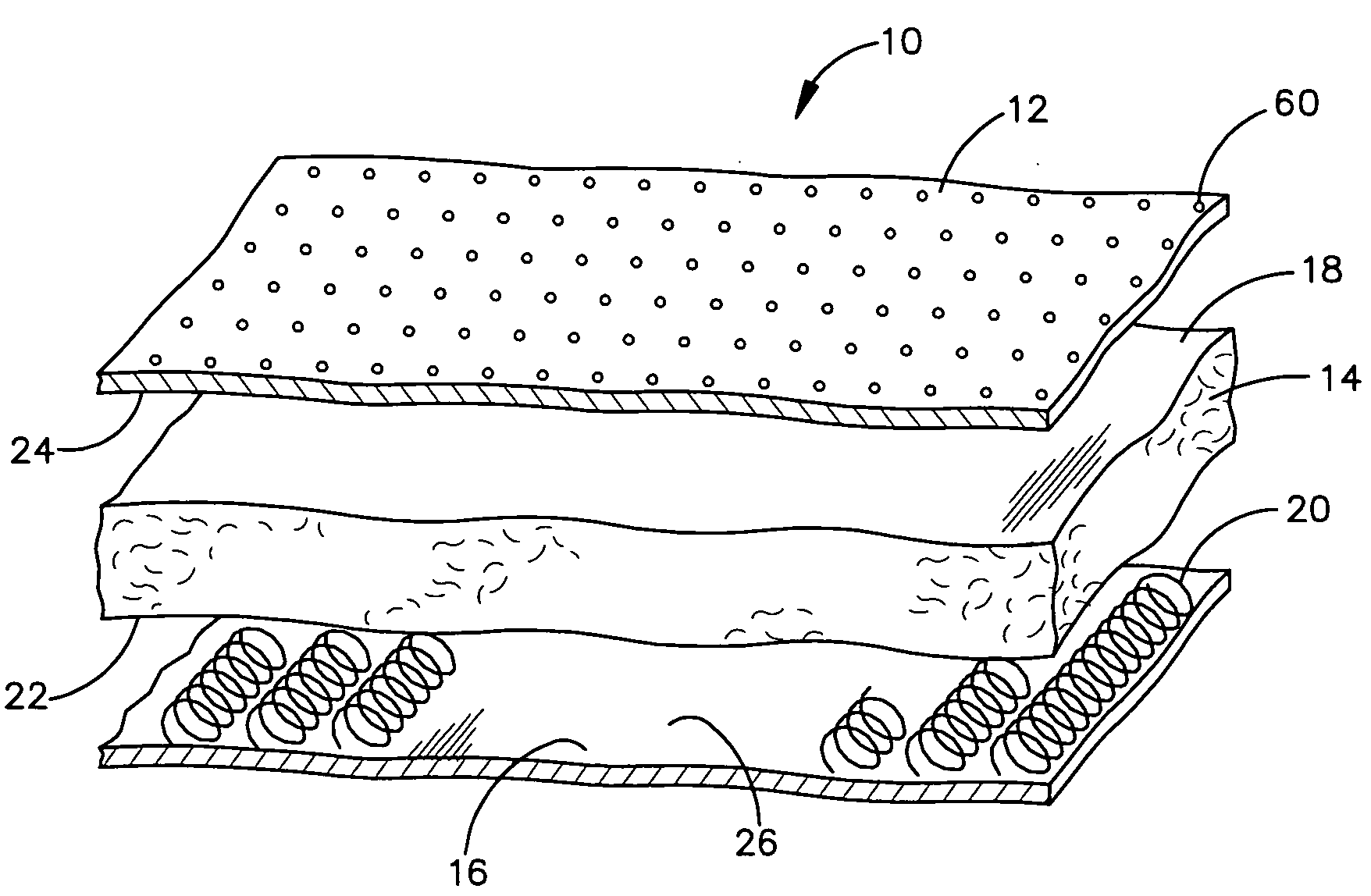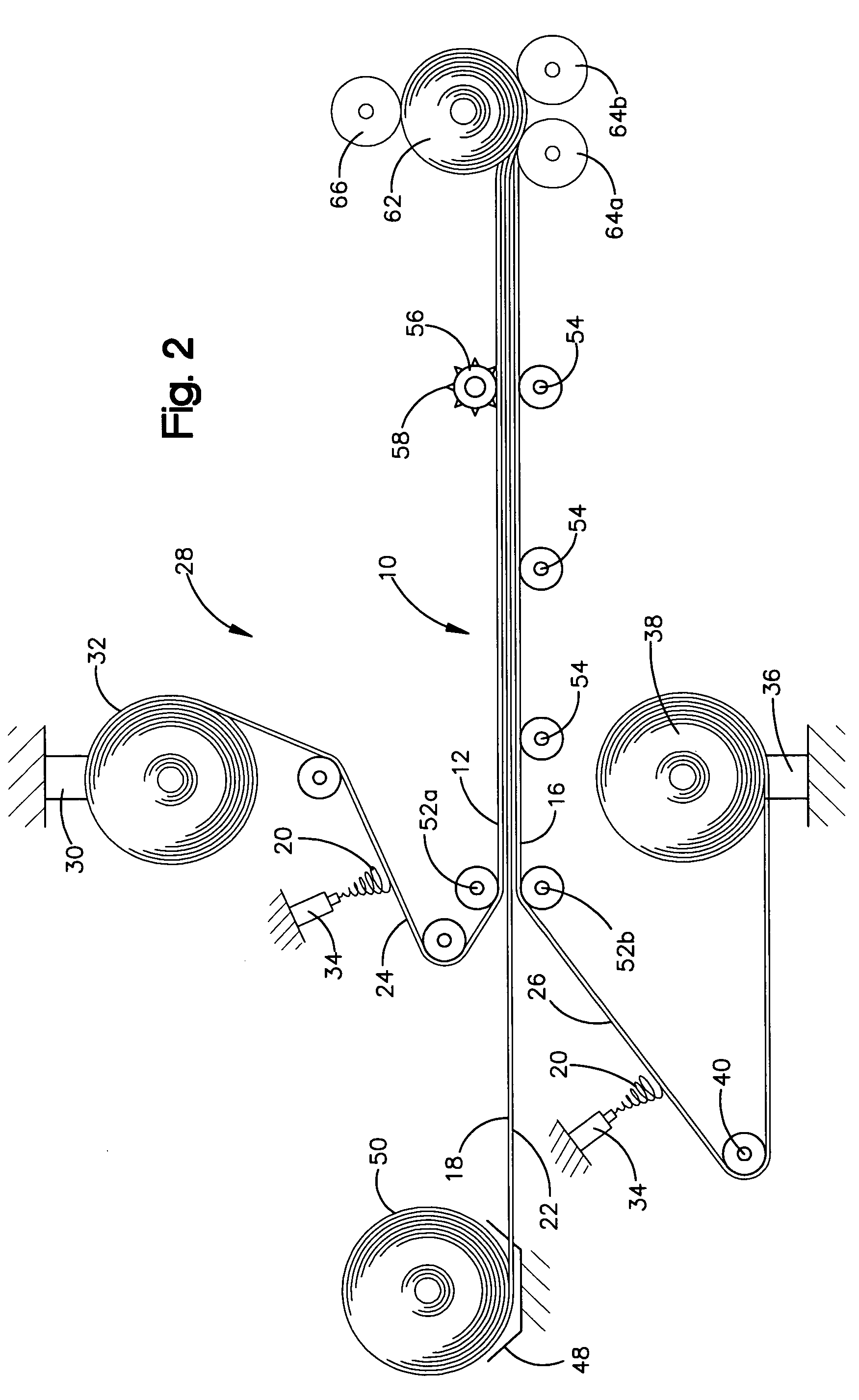Reflective insulation
a technology of reflective insulation and insulation layer, which is applied in the field of reflective insulation, can solve the problems of increasing the temperature of the roof and exterior walls of the building, preventing the effect of radiant barriers, and increasing the temperature, so as to eliminate the risk of material delamination and less flammability. , the effect of less flammability
- Summary
- Abstract
- Description
- Claims
- Application Information
AI Technical Summary
Benefits of technology
Problems solved by technology
Method used
Image
Examples
Embodiment Construction
[0026] Referring to FIGS. 1A and 1B, the present invention is directed to a reflective insulation system 10. The reflective insulation system 10 includes a reflective layer 12, a layer of fiberglass 14, and a vapor barrier layer 16. A first side 18 of the layer of fiberglass 14 is bonded to the reflective layer 12 by a deposit of hot melt glue 20 (FIG. 2). The vapor barrier layer 16 is bonded to a second side 22 of the fiberglass layer 14 by a second deposit of hot melt glue 20.
[0027] The reflective layer 12 has an outer layer that is made from a reflective material such as aluminum. In the exemplary embodiment, the reflective layer 12 is a laminate that includes a layer of aluminum foil adhered to a polyester film by a flame resistant adhesive. In the exemplary embodiment, the aluminum foil of the reflective layer laminate is 0.0003 inches thick and the polyester film is 0.00048 inches thick. The polyester film strengthens the reflective layer 12, preventing it from being torn eas...
PUM
| Property | Measurement | Unit |
|---|---|---|
| thick | aaaaa | aaaaa |
| thick | aaaaa | aaaaa |
| thick | aaaaa | aaaaa |
Abstract
Description
Claims
Application Information
 Login to View More
Login to View More - R&D
- Intellectual Property
- Life Sciences
- Materials
- Tech Scout
- Unparalleled Data Quality
- Higher Quality Content
- 60% Fewer Hallucinations
Browse by: Latest US Patents, China's latest patents, Technical Efficacy Thesaurus, Application Domain, Technology Topic, Popular Technical Reports.
© 2025 PatSnap. All rights reserved.Legal|Privacy policy|Modern Slavery Act Transparency Statement|Sitemap|About US| Contact US: help@patsnap.com



